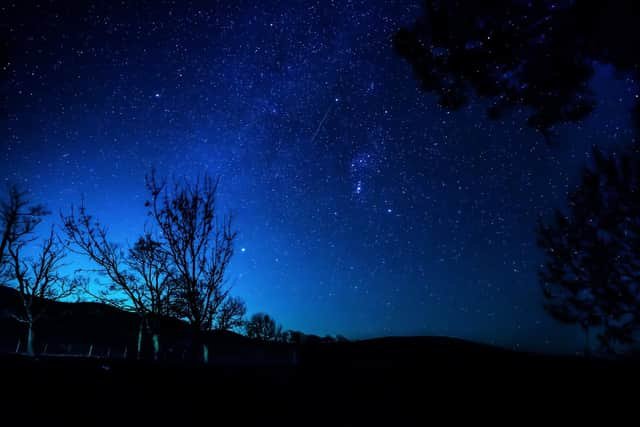Star study finds light pollution has increased in Bucks
and live on Freeview channel 276
While stargazers across most of the country have been enjoying their best views of the night sky since the Star Count began in 2011, light pollution in Bucks has increased over the past year.
According to the results of the annual star count, Britain has seen a significant reduction in severe light pollution levels, first recorded during lockdown last year.
Advertisement
Hide AdAdvertisement
Hide AdAfter peaking in early 2020, when 61 per cent of participants reported seeing 10 stars or less, severe light pollution fell to 51 per cent in 2021 and this year was down to 49 per cent.


In Bucks, however, severe light pollution has risen, up from 57 per cent in 2021 to 61 per cent in 2022 - 12 per cent above the national average.
The results also suggest that just 2.3 per cent of local stargazers counted more than 30 stars.
That compares to 5.8 per cent last year, suggesing the number of people enjoying truly dark skies across the county has more than halved.
Advertisement
Hide AdAdvertisement
Hide AdPaula Buck, chair of CPRE Bucks, said: "It’s disappointing to see that six in 10 people in Buckinghamshire who took part in Star Count experienced severe light pollution.
“During lockdown, we enjoyed darker skies across the county but, unlike other parts of the country, it seems things here have reverted to how they were before the pandemic.
"It’s a shame because light pollution is bad news for wildlife, the natural environment and human health.”
More than 2,500 people took part in the annual Star Count, the country’s biggest citizen science project of its kind, between February 26 and March 6.
Advertisement
Hide AdAdvertisement
Hide AdParticipants were asked to report the number of stars they could see in the Orion constellation.
Aylesbury Vale was one of the areas of Bucks that enjoyed the darkest skies, along with Hyde Heath near Amersham, Little Marlow, and the Chilterns Area of Outstanding Natural Beauty near Stokenchurch.
CPRE says turning off garden lights when not needed, dimming street lights and reducing office lighting could permanently reduce carbon emissions and cut energy bills while improving the natural environment for wildlife and human health.
Other solutions that could reduce both light pollution and energy use include councils investing in well-designed lighting, used only where and when needed. They can also adopt policies in local plans to reduce light pollution in building design and on construction sites and protect and enhance existing dark skies in their areas.
Advertisement
Hide AdAdvertisement
Hide AdCPRE chief executive Crispin Truman said: “The night sky is one half of our experience of nature, but we don’t often think of it like that.
"In and of itself, it helps balance our mental health and boost our emotional wellbeing.
"Recollect that experience of a starry sky and you instinctively know it soothed you.
”But our view of the night sky, and all the benefits it undoubtedly brings, is being blotted out by light pollution.
Advertisement
Hide AdAdvertisement
Hide Ad"Like all forms of pollution, it is damaging our mental and physical health, and also having a severe impact on wildlife.
"Yet, it is a form of pollution that is allowed to increase year on year without any effort being made to control the damage it is causing."
Find out more at www.cpre.org.uk/starcount